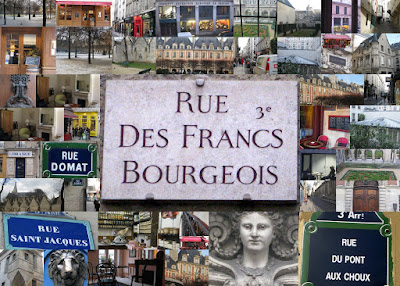Welcome to Pizza!
With this slip of the tongue by an obviously hungry Easy Jet flight attendant, our plane from Paris touched down at Pisa's Galileo Galilei airport. Dinner was also on our minds so the first thing we did after depositing our bags at our apartment was to go around the corner to our favorite neighborhood pizzeria. We were greeted like returning heroes by Giorgio, the restaurant's namesake. On a stroll after dinner on Borgo Stretto, Pisa's medieval Main Street, several other people yelled out: "Bentornati," - welcome back."
How sad we were to leave Paris and how happy we were to arrive in Pisa! No matter how many times we make the switch, however, the cultural shock is always the same -- the change of languages, the move from big city to small town and, most of all, the cultural differences between French and Italian people.
The grocery story, I've decided, is a micro cosmos of these cultural differences. In France at the G20 Supermarket near our apartment, the check-out line was always relatively quiet. People wait their turn and when it comes, there is a brief exchange of "Bonjour, Madame - Bonjour, Monsieur" between the client and the cashier. There are friendly exchanges that go beyond formalities, but it is not the standard fare.
In Italy, the din as you approach the check-out stations is deafening. Everyone is talking - to the person in front of them, to the person behind, to the person four aisles away. They are also talking to me, but I'm not always sure what they're saying since everyone is talking at the same time. No matter. I just smile, say sì or no, maybe shrug my shoulders and everyone seems to be happy.
Then the cashier looks over what "la signora" has bought and tries to guess what she will be cooking for dinner. "Making risotto with prosciutto tonight?" he'll ask. "No, the prosciutto is for tomorrow. I have some wild asparagus I picked yesterday for the risotto." That is the signal for everyone else to jump in. The conversation starts out with asparagus - how good or bad this year's crop is or how there were many more asparagus when they were young. Eventually, however, all conversations turn to a recipe of their mother or grandmother.
Every season has its recipes and since Easter is upon us, there is a lot of talk at the checkout line about Easter cakes and breads. The other day I waited in line for five minutes while the woman in front of me gave her grandmother's recipe for Schiacciata alla livornese to everyone within earshot. Earshot is pretty far because, did I mention, practically everyone in Italy shouts? Of course they have to shout because they are all talking at the same time. They interrupt each other a lot as well.
This conduct might seem rude to an outsider, but according to an Italian friend that impression couldn't be farther from the truth. "You must interrupt when someone is talking because if you don't," she said with wonderful Italian logic, "how would anyone know you are interested in what they are saying?"
Interest in the Livornese recipe must have been very high because interruptions were frequent as my fellow shopper gave her grandmother's recipe. Schiacciata is a bread that is sweet and light and you can find it in most Italian bakeries. If I understood correctly, the Livornese grandma's Easter recipe uses 12 eggs for three medium-sized breads. Ordinary schiacciata recipes for the same quantity call for only four or five eggs. The Easter recipe is heavy on the eggs because the warm spring weather apparently puts grandma's chickens in a laying mood. There are only so many fritattas a family can eat, thus the 12-egg schiacciata.
This is not a low-fat dish. In addition to the dozen eggs, there is a healthy dose of butter and oil. There is also some sweet wine, orange water, sugar, yeast and, of course, flour. Did I mention that it takes four days to make? I bought some today at the bakery. I don't think it was the Livornese grandma's recipe, but it was very good.
To see some photos of Pisa, click here.
Ciao,
Geraldine
Photos by Geraldine Calisti Kaylor





